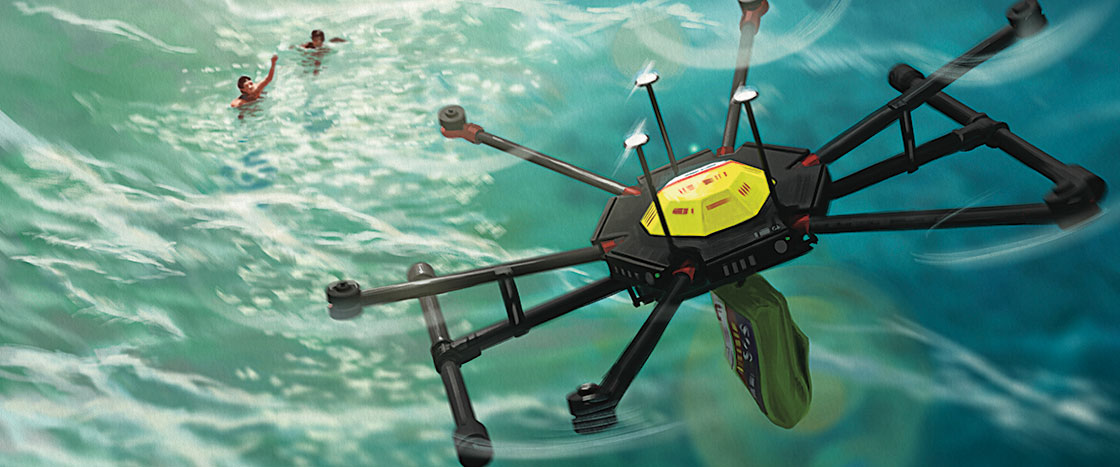On a summer day in 2018, a fun trip to the beach turned terrifying for two teens. The boys, ages 15 and 17, were swimming off the coast of New South Wales in Australia when the water became rough. They soon found themselves being pounded by 9-foot waves—unable to get to shore and struggling to stay afloat.
When lifeguard Jai Sheridan was alerted that two swimmers were in trouble, he sprang into action. But he didn’t rush into the water. Instead, he sent something that could reach them much faster: a drone.
Within 70 seconds, the drone—called a Little Ripper—had located the boys and dropped a flotation device down to them. The boys made it back to dry land, exhausted but unharmed.
This thrilling rescue—all caught on video by the Little Ripper’s camera—is just one example of the many ways that drones are making their way into our lives. And keep your eyes on the skies, because many more drones will soon be buzzing around up there, doing everything from forecasting storms to delivering pizza.

